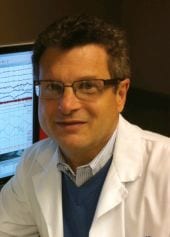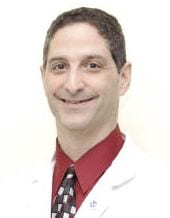Despite the economy, two institutions are moving, or already have moved, forward with new sleep laboratories. Although they are located in different parts of the country, their reasons are similar: There is still a growing need for sleep diagnostics.
It may be the worst of times for the overall economy, but you wouldn’t know it judging by the plans for two new sleep laboratories in different parts of the country.
Two years ago, before the economy went into a tailspin, Fort Myers, Fla-based Lee Memorial Health System planned to expand their facilities to include an outpatient sleep center. Despite worsening economic news, the outpatient sleep laboratory was built as intended. Meanwhile, in Nebraska, Freemont Area Medical Center (FAMC) is in the process of designing and building another freestanding sleep laboratory. Although the Florida and Nebraska centers have entirely different communities, the administrators of both centers have very similar motivations for moving forward with their plans—namely, an expected growth in patients and defining themselves beyond their hospital-based sleep laboratory.
CASE #1: The Sleep Disorders Outpatient Center, Lee Memorial Health System, Fort Myers, Fla
The new Sleep Disorders Outpatient Center built by Lee Memorial Health System in Fort Myers, Fla, was conceived 2 years ago to be an eight-bed, 11,000-square-foot, stand-alone sleep clinic with non-sleep-related uses as well.
Aside from sleep diagnostics, the building is utilized for other daytime purposes, including an outpatient neurodiagnostic center, an outpatient laboratory blood drawing facility, and a home care portion that helped patients with utilizing their CPAP machines, masks, etc. Costs were also reduced by leasing an existing building instead of constructing the center from scratch.
Alan Cunningham, BS, RRT, system director at Lee Memorial Health System, explains that the reasoning behind building the center was to more efficiently serve the outpatient sleep community by separating those referrals from inpatient sleep studies.
Cunningham says, “We still do sleep studies on in-house patients, but we’re not struggling with the schedule, trying to balance the outpatient and inpatient for the sleep lab. Now, with this freestanding location, we’re able to open up more spaces for in-house patients, especially at our Health Park campus. We turned that location into a pediatric sleep disorder center, which enabled us to expand on that service there.”
Although Cunningham expects volumes to rise after the marketing campaign is implemented, the center is limiting studies to four patients per night, 6 nights per week, for now. In addition, it will be adding an ALS clinic and an asthma education program, thus maximizing the space even more. He also expects that the center will see a return on investment within a year.
Case #2: (The Future) Sleep Center of Freemont Area Medical Center, Freemont, Neb
It’s one thing to plan a sleep center when the economy is looking fairly good. But even in today’s challenging economic times, Freemont Area Medical Center in Freemont, Neb, is moving forward with plans for a four-bed, 2,500-square-foot, family-friendly, freestanding sleep center that is slated to open in the fall of 2009.
The center will serve a community of about 40,000 residents, including the Omaha area. Patrick Booth, president and CEO of FAMC, says that they originally wanted to upgrade their hospital facility to accommodate more outpatients, but then realized that a nominal additional investment could allow them to have their own freestanding clinic.
Another incentive for building a separate center was that FAMC was trying to recruit a second pulmonologist. “It became clear that most pulmonologists have a strong interest in sleep programs and want to read sleep studies,” says Booth.
Booth reports that FAMC is currently performing about 350 studies per year in two hospital rooms, operating 6 days per week with one technologist. He expects that the new four-bed center will be at capacity when it opens and launches its physician awareness campaigns. Volume also will be derived from increasing adult awareness about OSA, as well as potential pediatric OSA patients, and cardiologists wanting sleep diagnostics as part of their cardiac treatment protocols.
“The fact that we’d entered into a recession, frankly, didn’t give us much pause,” says Booth. “We haven’t seen the volume drop in patient and outpatient care here. I think a small one might be coming, but the Midwest has been more insulated than some in the downturn.”
Booth also believes that FAMC’s sleep market may be insulated because sleep is such a niche business. It also has the advantage of being the only hospital in town, but he notes that there are seven AASM-accredited laboratories in the entire state of Nebraska, and he says it intends to be another one.
Tor Valenza is a staff writer for Sleep Review. He can be reached at [email protected].




